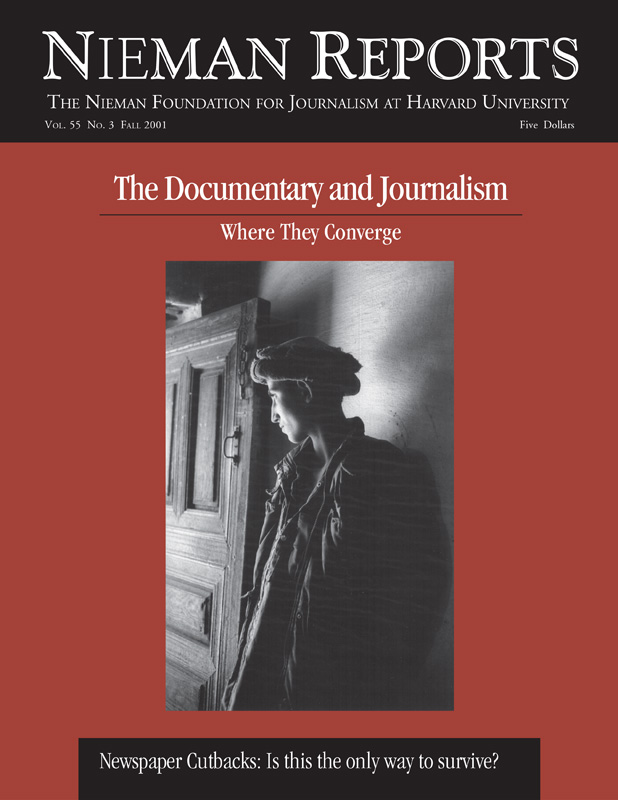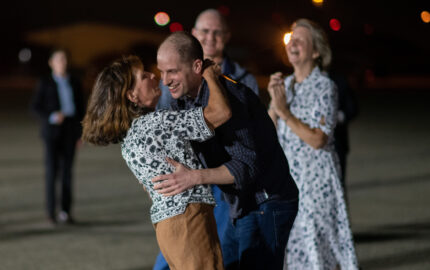
In its Fall 2000 issue, this magazine published a series of articles exploring the idea that narrative writing was returning to newspapers. The lead article was written by Mark Kramer, a writer and highly respected teacher of the narrative craft who has directed a conference on the narrative form each year at Boston University, where he has been a professor and writer-in-residence for more than a decade.
“The basic assertion is simple,” wrote Kramer. “Newspapers might both improve coverage and retain more readers by employing storytelling techniques to convey news.” Editorial interest in narrative has been stimulated, he continued, “in the course of a search for remedies to widespread current business problems: declining or stagnant newspaper circulation, aging readership, and decreased minutes spent reading papers.”
Narrative was on the list, he explained, “because it engages readers; in this age of mega-corporate media saturation, Web sites and workaholism, readers still are attracted to stories in which people’s lives and decision-making are vividly portrayed.”
Last winter several Nieman Fellows, who were among 750 to attend Kramer’s narrative conference and who attended his class at B.U., urged me to bring him to Lippmann House to teach a narrative journalism class. Mark and I had lunch and then a series of meetings that led to reinstating the narrative course for the Nieman Fellows that had been introduced the year before by Robert Vare (NF ’97), and much more.
Kramer laid out a vision for making the Nieman Foundation a center of activity in narrative journalism. He saw it as an opportunity to deploy the great strength of the Nieman name and reputation by reaching out to the working press through discussions of reporting and writing practices; the role of editing; the ethics of narrative reporting, and relationships of reporters with sources, with readers, and with the culture and institutions of journalism. He described formal and informal ways in which the Nieman program could support the development of narrative work, both in the United States and abroad through seminars and the Nieman Web site. (I urge you to go to the foundation’s Web site [www.nieman.harvard.edu] to read more from our Fall 2000 issue about the experiences of other reporters who use this approach.)
His ideas struck me as a natural fit with the Nieman mission to elevate the standards of journalism, serving Nieman Fellows and the larger journalism community as well. We were able to quickly transform this vision into a new initiative—the Nieman Foundation Program on Narrative Journalism. Kramer joins the Nieman staff as director of the program and writer-in-residence. He brings with him the annual narrative journalism conference, which will be held November 30-December 1-2 under the Nieman/Harvard banner. This fall, he will teach the narrative form to the Nieman class and plans to offer courses to Harvard students. He will be available as a writing consultant to student publications, thus helping to fulfill the Nieman Foundation’s obligation to serve the university community.
Kramer’s presence will enrich significantly our program and the fellows. As Stefanie Friedhoff, Nieman Fellow ’01, said in her note to the class of 2002, “Mark Kramer stuffed his students with ideas of how to convince colleagues and editors that a long narrative story here and there can have an impact; how to go about narrative and do it in a way that is intriguing and convincing. Thus, narrative became visible as one concrete tool to do a better job.”
Kramer’s overview of narrative journalism is worth noting. “First of all, it’s not an invented thing, but one that is evolving,” he wrote in reply to my query. “My observations on narrative derive from common practice, although I plead guilty to trying to influence that practice.
“Narrative describes events as they take place over time. This splitting of event into process of course fully mobilizes journalists’ writing skills and judgment, which is why it can serve readers well and excite reporters, but also why editors approach cautiously. All reporting implies a selective eye. In narrative accounts, the selection is fine-grained: What events are central? Where in the tangled rush of events might a reporter slow action to catch moments and details and persons, and where brush past events? The reporter gets to figure it all out and to chat with readers…. Narrative invites reporting beyond the least common denominator, because it acknowledges complex emotions, human situations and consequences, moving conversation with readers beyond simple shared sentimentality.”
So, in a sense, this narrative movement in American journalism isn’t simply about storytelling, but about connecting with varied readers. It invites us to deploy proven practices, including scrupulous use of set scenes and information about personality. It invites the reporter’s artistry. Kramer adds, “It surely doesn’t include inventing an iota of material. That’s a bedrock taboo, as industry-threatening as ever.”
The Nieman Foundation Program on Narrative Journalism has been launched. I invite your ideas and experiences, cautions and encouragement.


